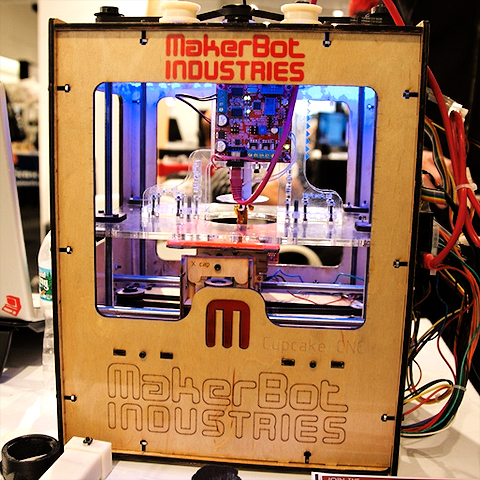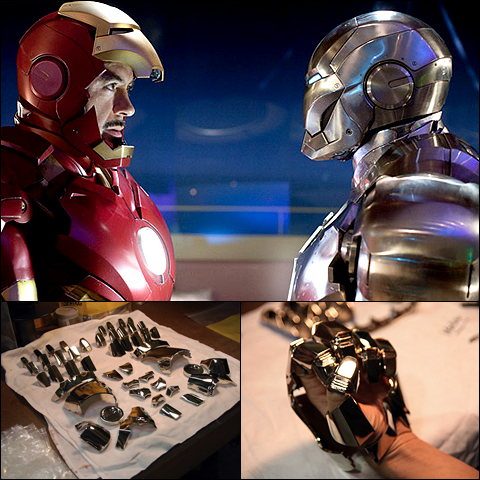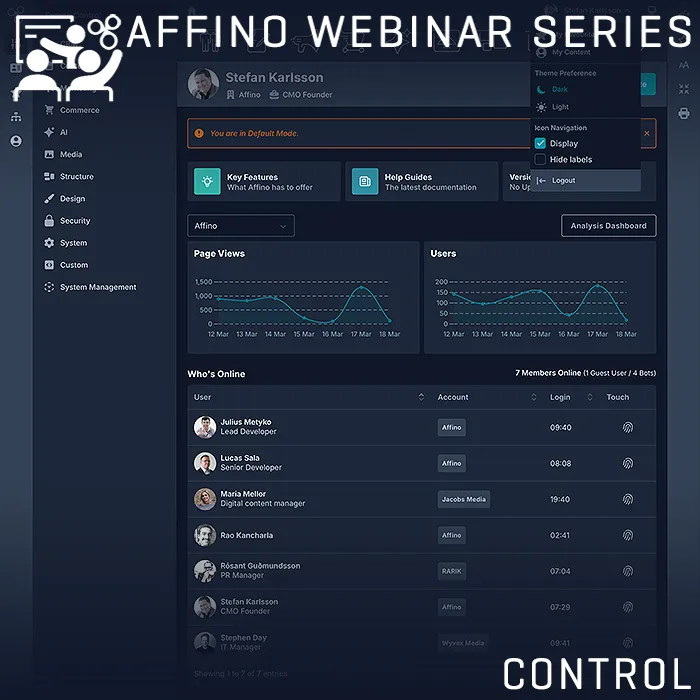The New Industrial Revolution

Affordable, empowering technology - which can be used at and from the home is fuelling a new kind of industrial revolution...
We at Comrz marshall a small, global workforce using numerous key Internet-based technologies. At the centre of everything is our own Social Commerce Platform - Affino, which handles most forms of our formal communications, sign-in and project logging, as well as the marketing, sales and support for our services and solutions - via our own integrated and fully-featured Community.
Informal communications are handled via Skype, Google Talk and Talking Platforms’ VoIP services, including our main phoneline - which channels a central London number through to all manner of devices - including laptops and iPhones. Google Mail is our chosen vehicle for email, which we find much easier to manage than the former Outlook equivalent. All this means that we can effectively and powerfully - conceive, develop and deliver our services and solutions in a collaborative fashion - with each member of the team able to work in a different location, often separated by thousands of miles and several different time zones.
Software and Design though have always had the potential to be conducted from domestic premises. What is new is that companies and individuals interested in manufacture can now avail themselves of similar tools and technologies to oversee largely domestically engineered products. This is in effect a democratization of the tools of production - and allows any consumer to become their own manufacturer - which leads to more flexibility, more customisation and more consumer choice - which is good for all in the long-term.
The Invention, Design and Development phases are still key elements here as with say software development. The main difference being in the area of model-making and prototyping. Significant developments in 3D Printer technologies which finely extrude, layer up and meld together anything from plastics to metals - to form any shape imaginable - have been a godsend to small manufacturing and product design businesses. Of course, someone will need to know how to handle 3D CAD software, and be able to output to the appropriate file format. You can then either send your file to a local prototyping workshop, or else buy in your own 3d Printer, which can be achieved for as little as around $1000 - where you would assemble MakerBot’s CupCake CDC Plastruder from kit form.
3D Printing / Rapid Prototyping / Additive Manufacture
What started off as largely a modelling discipline has become a fully fledged industry in its own right - typefied by the US Military’s use of such technology to produce replacement parts for combat vehicles - right at the battle front.
Another great current example is how most of the Iron Man 2 props and Armour were produced on an Objet Eden 3D Printer - the plastic parts were designed in CAD, produced in hours and then painted and assembled. The following day they would be taken to the film studio and fitted onto cast members, including lead actor Robert Downey Jr. 3D Printing has become an essential part of modern film making - for making scale models for scenery, as well as any number of costume and stage props.
The fundamentals of 3D Printing / Protoyping are the same - building up very thin layers of materials to form solid 3D objects - from basic models and prototypes - to actual industrial working parts for aerospace and medical sectors. An enormous range of materials can now be harnessed - from plastics through to metals, ceramics and glass.
Although the basic fundamentals are the same, there are various techniques used to achieve the end result - the 4 key technologies are as follows:
- Fused Deposition Modelling: Sometimes known as Micro-Extrusion or Plastrusion - this method melts and pipes out ultra thin ribbons of thermoplastics such as ABS (like Lego) which solidifies on impact; e.g. CupCake CNC from MakerBot Industries (c$1,000)
- Selective Laser Sintering: Using a Laser to fuse together powder form / small particles of plastic, metal, ceramic or glass - e.g. the Z Printer 650 from the Z Corporation (c$60,000+)
- Stereolithography: the same technique that has been used by dentists for several years to fill cavities; for industrial purposes - a liquid photopolymer resin is layed down in ultra thin layers - and a UV Laser is used to ’cure’ / solidify the resin and make it adhere to the layer below; e.g. Connex 500 from Objet Geometries (c$150,000+)
- Electron Beam Melting: not dissimilar to Selective Laser Sintering, this process uses a computer controlled electron beam rather than a laser to fuse together mostly metallic powders (typically Titanium or Chrome) - it has higher tolerances and can withstand greater power output which makes it ideal for high end industrial manufacture; e.g. A2 from Arcam (c$520,000+)
Obviously, the more you pay for your 3D Printer - the higher quality the output. Several companies are fighting to dominate each of the above sectors, and aggressive competition is bringing the price down steadily. It might be a stretch right now though to expect a household to be able to afford a quality manufacturing 3D Printer, which would be expected to retail for at least $150,000 right now.
Wired magazine advises that you cross-reference your ideas / inventions with your national patents and copyrights office before you set off on your manufacturing adventure; but after some cursory checks - the world really can be your oyster, as you can produce anything your imagination can conceive - from the comfort of your home.
Taking it as a given that most could not yet afford an industry standard 3D Printer - you would be more likely to produce a lower-cost - full-size prototype with relevant technical specifications via some kind of lower-end Plastruder. Once you have this, you can then look to out-sourcing the proper engineering and mass-manufacture. The perfect resource here is the website Alibaba - which lists out manufacturers by expertise, and allows you to connect with someone who would be willing and able to produce a saleable product for you. This in itself is totally revolutionary as even until fairly recently factories were both unwilling to, and were not set up for production runs of small batches.
There can be several steps in the process of evolving a fully market-ready solution. Apart from getting to a robust, reliable working example, there is all the marketing to be considered also - naming / branding / packaging / promotion / audience targetting / distribution etc.
Yet in all of this, within these core and fundamental business processes, companies will avail themselves of similar technologies to those that Comrz utilises on a daily basis. And for creating a showcase for your product, building an audience and actually selling to that audience - few technologies are as adept as Affino.
The recent Wired Magazine article - ’Atoms are the new Bits’, makes mention of a California collective of car / automotive engineering enthusiasts who conceived and produced their own kit car (Local Motors). The chassis, shell, and several of the components were conceived and produced under the control of the collective, and several other components, including the engine - were bought in from suppliers. If you have ever watched the TV Program ’American Chopper’ - about the daily workings of Teutul Family run custom motorbike manufacturer ’Orange County Choppers’, you should be familiar with how the design and manufacturing process works. The engines and several components are bought in, but the chassis, and key design details on the bike - seats, handlebars, fuel tanks and the like are custom manufactured, and the whole thing is lovingly assembled by hand in-house. Local Motors has the car-build as part of the ownership experience, and buyers of the first model - The Rally Fighter - need to take off two weeks to assist with the assembly of their own vehicle.
Of course with ’Local Motors’ and ’Orange County Choppers’ the significant ’production’/ assembly still takes place within a factory as such, albeit a small, privately owned factory. The difference with the New Industrial Revolution is that the factory space is often leased, or the whole manufacturing process is outsourced. Outsourcing and Crowdsourcing are of course huge industries these days; not a day goes by without Comrz receiving some kind of offer of collaboration from an outsourcing company. A difference with the new economy though is that the outsourcing is now more of a collective team building exercise - with workers organised in more formal collaborative groups.
For Comrz, it takes us 6 to 9 months to get a staff member up to speed with the enormous scope and integrated comprehensiveness of the Affino platform. Traditional outsourcing is not a possibility here, nor is it desirable. The new way of working is to find like-minded inviduals you can colloborate with on equal terms - working within well structured and formal boundaries, even though somewhat in an informal style.
The modern workforce is far more mobile than it used to be - people move to new Cities, new Countries, even new Continents; with the old model - you would have lost those staff members that moved away from your local area. Nowadays though, your staff members and colleagues can continue to work with you - wherever in the world you or they find themselves.
The beauty of the modern world is that with the right aptitude and experience, pretty much anything is possible. And for all those fellow entrepreneurs out there who are looking for the best way to showcase and promote their offerings, may we suggest you put Affino on your list of key tools to check out!

Related
How does Affino enhance collaboration among remote team members?What advantages does 3D printing offer for small manufacturers?How can outsourcing improve product development in the new economy?What role does social commerce play in modern marketing strategies?How can individuals leverage CAD software for personal manufacturing projects?
Did you find this content useful?
Thank you for your input
Thank you for your feedback
Upcoming and Former Events
Webinar - Introducing Affino's Fourth Generation AI Services
Webinar - Enhanced Affino Commerce & Subscription Capabilities
Webinar - All About the New Affino Control Centre
Affino Innovation Briefing 2024
Meetings:
Google Meet and Zoom
Venue:
Soho House, Soho Works +
Registered Office:
55 Bathurst Mews
London, UK
W2 2SB
© Affino 2025












